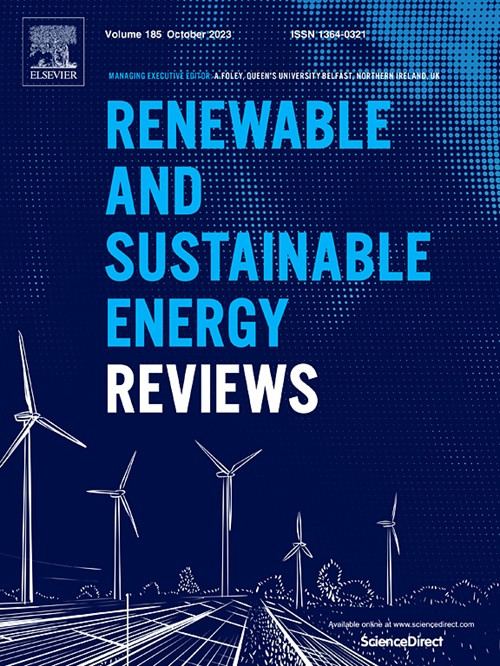Recent research trends in inorganic charge transport materials for next-generation perovskite solar cells
IF 16.3
1区 工程技术
Q1 ENERGY & FUELS
引用次数: 0
Abstract
Perovskite solar cells (PSC) have recently garnered significant attention in solar energy research, recording power conversion efficiency (PCE) exceeding 26.95 %. These devices are noted for their simple fabrication and cost-effectiveness, marking them as a promising next-generation solar cell technology. However, commercialization is still hindered by stability and performance issues. In PSCs, charge transport materials play a crucial role in enhancing PCE by suppressing charge recombination and protecting the perovskite material from heat and humidity, thereby ensuring long-term stability. Inorganic materials with a perovskite structure exhibit excellent light absorption and charge transport efficiency, making them vital in optoelectronic applications. By applying doping or passivation to inorganic materials and designing composites with organic materials, both efficiency and stability can be improved simultaneously. This review aims to elucidate and analyze the roles and properties of n-type and p-type inorganic materials in addressing efficiency and stability issues in PSCs. Additionally, it provides an in-depth understanding of various charge transport materials (CTM) to inspire the development of future CMT models.
新一代钙钛矿太阳能电池无机电荷输运材料的研究进展
钙钛矿太阳能电池(PSC)的功率转换效率(PCE)超过26.95%,近年来在太阳能研究中备受关注。这些设备以其简单的制造和成本效益而闻名,标志着它们是有前途的下一代太阳能电池技术。然而,商业化仍然受到稳定性和性能问题的阻碍。在PSCs中,电荷传输材料通过抑制电荷重组和保护钙钛矿材料免受热量和湿度的影响,从而确保长期稳定性,在提高PCE方面起着至关重要的作用。具有钙钛矿结构的无机材料具有优异的光吸收和电荷传输效率,使其在光电应用中至关重要。通过对无机材料进行掺杂或钝化处理,并用有机材料设计复合材料,可以同时提高效率和稳定性。本文旨在阐述和分析n型和p型无机材料在解决psc的效率和稳定性问题中的作用和性质。此外,它还提供了对各种电荷输运材料(CTM)的深入了解,以启发未来CMT模型的发展。
本文章由计算机程序翻译,如有差异,请以英文原文为准。
求助全文
约1分钟内获得全文
求助全文
来源期刊

Renewable and Sustainable Energy Reviews
工程技术-能源与燃料
CiteScore
31.20
自引率
5.70%
发文量
1055
审稿时长
62 days
期刊介绍:
The mission of Renewable and Sustainable Energy Reviews is to disseminate the most compelling and pertinent critical insights in renewable and sustainable energy, fostering collaboration among the research community, private sector, and policy and decision makers. The journal aims to exchange challenges, solutions, innovative concepts, and technologies, contributing to sustainable development, the transition to a low-carbon future, and the attainment of emissions targets outlined by the United Nations Framework Convention on Climate Change.
Renewable and Sustainable Energy Reviews publishes a diverse range of content, including review papers, original research, case studies, and analyses of new technologies, all featuring a substantial review component such as critique, comparison, or analysis. Introducing a distinctive paper type, Expert Insights, the journal presents commissioned mini-reviews authored by field leaders, addressing topics of significant interest. Case studies undergo consideration only if they showcase the work's applicability to other regions or contribute valuable insights to the broader field of renewable and sustainable energy. Notably, a bibliographic or literature review lacking critical analysis is deemed unsuitable for publication.
 求助内容:
求助内容: 应助结果提醒方式:
应助结果提醒方式:


